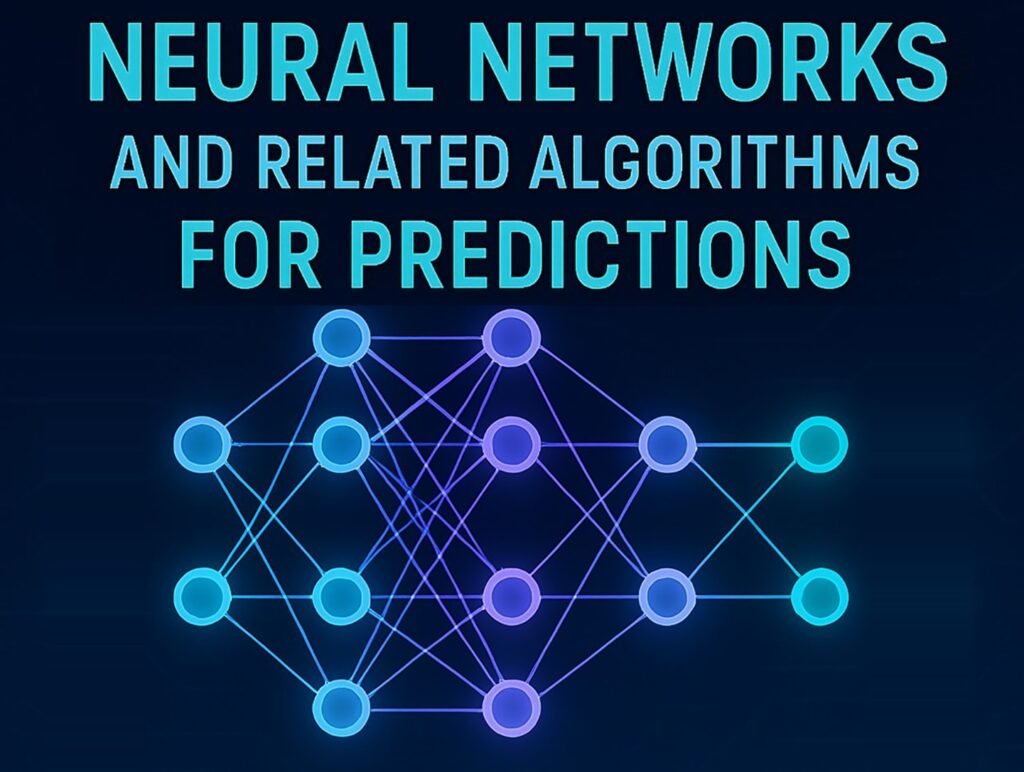by: Syed Umair Ali
In modern engineering, the ability to analyze data and make accurate predictions has become essential, whether in designing efficient systems, managing industrial processes, or optimizing resources. Neural networks and their associated algorithms have emerged as powerful tools in this context, enabling engineers to solve complex prediction problems with high precision. This article explores how neural networks work, how they are trained, and their practical applications in various engineering fields.
What Are Neural Networks?
A neural network is a computational model inspired by the structure of the human brain. It consists of interconnected processing units called neurons, arranged in layers:
• Input Layer: Receives raw data (e.g., sensor readings, time-series values).
• Hidden Layers: Perform intermediate computations using weighted connections and activation functions.
• Output Layer: Produces the final prediction or classification result.
Each connection carries a weight, and each neuron applies a non-linear activation function (e.g., ReLU, sigmoid) to introduce complexity into the model’s behavior. This architecture allows neural networks to approximate complex functions and relationships between input and output variables.
Predictive Modeling in Engineering
Neural networks are particularly valuable in engineering for solving tasks that involve:
• System Identification and Control: Modeling nonlinear systems where traditional equations are hard to derive.
• Fault Detection and Diagnosis: Predicting failures in industrial equipment using sensor data.
• Load Forecasting: Estimating future power or network loads.
• Predictive Maintenance: Forecasting equipment health using vibration, temperature, or acoustic signals.
• Quality Control: Classifying product quality using image or signal analysis.
Key Algorithms That Power Neural Networks
1. Backpropagation
This is the core algorithm for training neural networks. It uses the chain rule of calculus to compute the gradient of the loss function concerning each weight. This gradient is then used to update the weights in a direction that minimizes error.
2. Optimization Algorithms
These algorithms determine how weights are updated during training:
• Gradient Descent: The most basic form, updating weights incrementally based on the gradient.
• Adam (Adaptive Moment Estimation): Combines momentum and adaptive learning rates, leading to faster convergence and better performance in noisy datasets.
3. Regularization Techniques
To avoid overfitting and improve generalization:
• L2 Regularization (Ridge): Penalizes large weights.
• Dropout: Randomly deactivates neurons during training to prevent dependency on specific paths.
4. Activation Functions
Introduce non-linearity to the model:
• ReLU (Rectified Linear Unit): Common in deep networks due to computational efficiency.
• Sigmoid/Tanh: Used in binary or bounded output cases.
Common Neural Network Architectures in Engineering
Case Example: Predictive Maintenance in Manufacturing
Imagine a manufacturing plant where motor vibrations are continuously monitored. A neural network can be trained using past vibration data to detect patterns that precede failures. Using an LSTM model, engineers can predict the Remaining Useful Life (RUL) of equipment and schedule maintenance before failure occurs, saving downtime and costs.
Implementation Tools
Engineers can implement neural networks using libraries such as:
• TensorFlow / Keras (Python)
• PyTorch
• MATLAB’s Neural Network Toolbox
These platforms offer pre-built layers, training utilities, and GPU support to simplify deployment.
Challenges in Engineering Contexts
• Data Collection and Preprocessing: Sensor data often requires filtering, normalization, and alignment.
• Model Interpretability: Engineers may need explainable predictions, which is a challenge with deep models.
• Real-Time Constraints: Some applications (e.g., control systems) require fast inference and lightweight models.
Conclusion
Neural networks, supported by sophisticated algorithms, offer engineers a robust framework for predictive modeling. Whether enhancing safety, improving product quality, or reducing operational costs, these AI tools are reshaping engineering practices. As data-driven engineering continues to evolve, neural networks will play an increasingly vital role in intelligent system design and optimization.
About the Author:
The author is a passionate writer and blogger, and the founder of https://thepengenius.com, a platform dedicated to exploring ideas that inspire growth, creativity, and meaningful living. With a keen interest in personal knowledge management, emerging trends in Artificial Intelligence, and innovative strategies for leading a more fulfilling life, Umair blends curiosity with purpose in his writing. His work reflects a continuous pursuit of insight, offering readers fresh perspectives and practical tools to thrive in an ever-evolving world.



